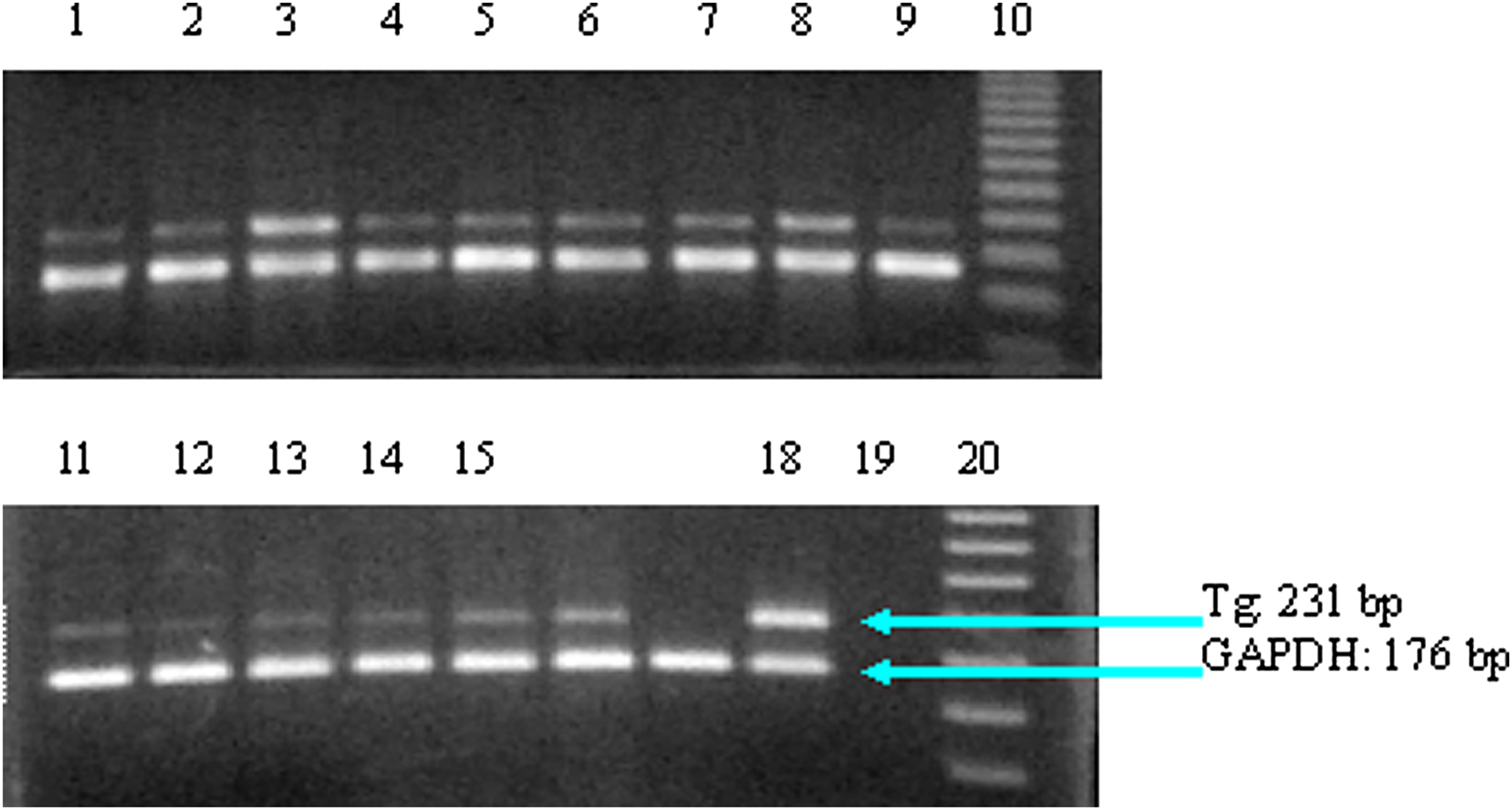During the last years several groups have used the technique of RT-PCR for the detection of circulating thyroid cells, through the amplification of thyroglobulin (Tg) and TSH receptor(TSH-R) mRNA; however the published results are controversial. In this study we investigated the utility for the detection of Tg and TSH-R mRNA by RT-PCR in patients with differentiated thyroid cancer (DTC) during treatment with levothyroxine.
Subjects and methodsWe investigated the expression of Tg and TSH-R mRNA by single and nested RT-PCR in the blood of 3 groups of subjects: (A) 34 patients with DTC and no evidence of disease, (B) 8 patients with DTC and evidence of local or distant metastasis and (C) 13 normal subjects. Expression levels of Tg mRNA were also analysed by comparative semi-quantitative RT-PCR.
ResultsTg and TSH-R mRNA signals were detected in all subjects (patients with DTC with and without evidence of disease and in normal subjects) by single or nested RT-PCR. By semi-quantitative RT-PCR and densitometric analysis of PCR products, mean levels of circulating Tg mRNA of the 3 groups were: Group A 0.182±0.107, Group B 0.329±0.298 and Group C 0.305±0.217.
ConclusionsSingle or nested RT-PCR for Tg and TSH-R mRNA is not a suitable tool in the follow-up of patients with DTC. Lower levels of Tg mRNA in patients with DTC without evidence of disease, although not significant, may indicate that small numbers of thyroid cells may be normally present in the circulation or may represent an ectopic transcriptionof messengers from blood cells
Durante los últimos años varios grupos han utilizado la técnica de RT-PCR para la detección de células tiroideas circulantes, mediante la amplificación del ARNm de Tg y TSH-R, sin embargo los resultados publicados son controvertidos. En este trabajo investigamos la utilidad de la detección de ARNm de Tg y del receptor de TSH (R-TSH) mediante RT-PCR en pacientes con carcinoma diferenciado de tiroides (CDT) durante el tratamiento con levotiroxina.
Pacientes y métodosInvestigamos la expresión del ARNm de Tg y del R-TSH mediante RT-PCR con una y dos rondas de amplificación, en la sangre de 3 grupos de pacientes: A) 34 pacientes con CDT sin evidencia de enfermedad actual B) 8 pacientes con CDT y evidencia de metástasis y C) 13 sujetos normales. La expresión del ARNm de Tg fue también analizada mediante RT-PCR semicuantitativo.
ResultadosSe detectó la presencia de ARNm de Tg y R-TSH en todos los sujetos (pacientes con CDT con y sin evidencia de enfermedad y en los sujetos normales) mediante RT-PCR con una y dos rondas de amplificación. Mediante RT-PCR semicuantitativo los niveles promedio de ARNm de Tg en los 3 grupos fueron los siguientes: Grupo A 0.182±0.107, GrupoB 0.329±0.298, Grupo C 0.305±0.217.
ConclusionesLa detección de ARNm de Tg y de R-TSH por RT-PCR con una o dos rondas de amplificación no es una herramienta útil para el seguimiento de los pacientes con CDT. En los pacientes con CDT sin evidencia de enfermedad vigente, los niveles más bajos de ARNm de Tg, aunque no significativos, podrían indicar que un pequeño número de células tiroideas puede estar presente normalmente en la circulación o podría representar una transcripción ectópica de los mensajeros a partir de células de la sangre.
Artículo
Comprando el artículo el PDF del mismo podrá ser descargado
Precio 19,34 €
Comprar ahora







